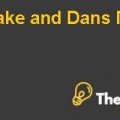Optimization Problem Relating to Sting Case Solution
For results, we made 8 columns. First one provides the instance identifiers, second for results of greedy algorithm, third relates for best solution in 4 independent runs per problem instance (CPU time limit 7200 sec per run), fourth contains the value of best solution in 10 independent runs per problem instance (CPU time limit 1000 sec per run) and last four columns are driven from the integer liner program. First one of them provides the best solution with 3600 CPU sec. Numbers with asterisk shows the optimality of the solution. Second column shows the computation time (sec) just provides single value in case of optimality of solution otherwise it provides the 2 values of x (time for first valid solution) and y (time for best solution with 3600 CPU sec). Third column contains the optimality gap in %. Fourth column indicates the size of set B. All the highlighted values indicate the best results for each problem. Last row of each table is reserved for averages.
After analyzing the results of each sets, we conclude that CPLEX is able to solve group 1 instances to optimality which can be no other algorithm method find. It will also make it able to discover new best-known solutions for remaining 35 instances without the proven optimality in 3600 CPU sec (exception of real set). CPLEX provides the competitive advantage over competitors. In graphing way, we plot the common block length at x-axis and number of blocks in % plot in y-axis for all 3 groups and real set. The optimal solution located in the real set, best value is 87 with 968 seconds. (Rahman, Aleda Group, 2014)
In Ph1 of second contribution, we choose the subset for B with the blocks which have the correspondence of more than or equal to 1. Ph1 count the number of positions of binary variable xi with additional one y that are not covered in any of the chosen block. It contains 4 columns, first for identifier, second for best value and remaining 2 for results. The best values are marked with + sign in front of values. The second heuristic performs for larger instances. This contains the 7 columns. First provides the length of input strings, second indicates the computation with time limit 3600 CPU sec, remaining 5 columns provides the results of heuristic. The last column of both phases gives the information about common blocks considered by heuristic. After summing both columns in % can easily be calculated by the heuristic for comparing the number for the size of complete set.
Conclusion & Future Research:
In this article, the considered problem with the applications in bioinformatics name as Minimum Common String Partition (MCSP) problem. Here we performed 2 new contributions. First one is IBM ILOG CAPLEX model used to find out all best-known solutions for the problem instance set consisting 45 instances with 4 different size of groups (3 artificial and 1 real life set). Second contribution consist of 2 phases. Phase 1 is strongly based on the developed ILP model. Second phase is applicable for large instance problems. The results clearly indicates that the ILP formulation is effective and provides the excellent results.
Related to future aspects, it can be used to study mathematical programming strategies to introduce integer liner program into meta heuristic technique such as GRASP and iterated greedy algorithms. Also it can be used to gather the data from comparative genomics applications for future experimental analysis. (Rahman, NCBI, 2015).............
This is just a sample partical work. Please place the order on the website to get your own originally done case solution.











